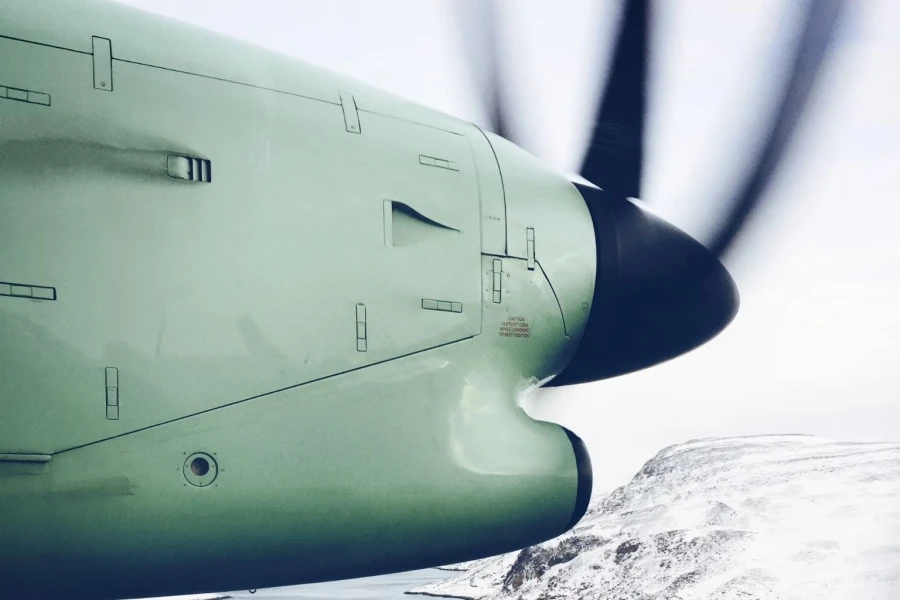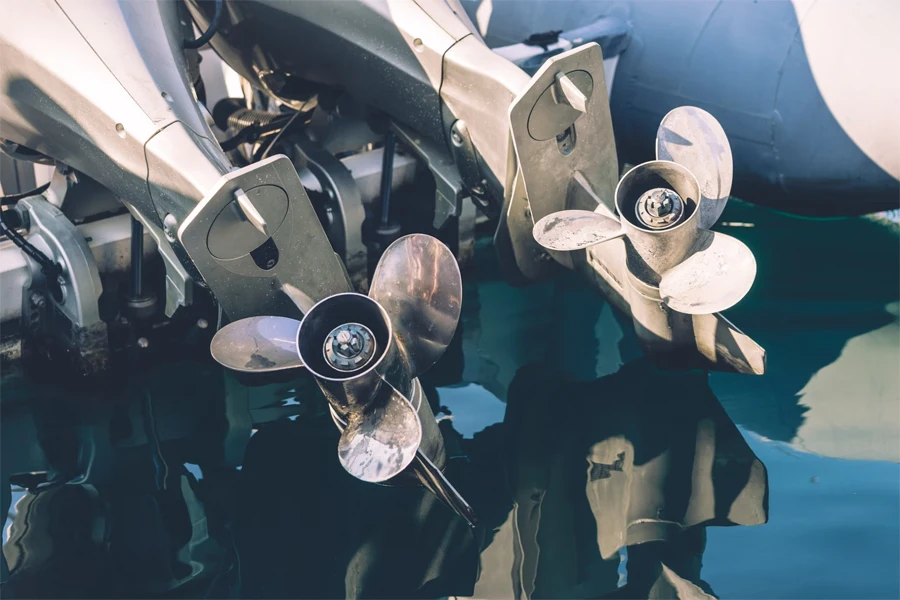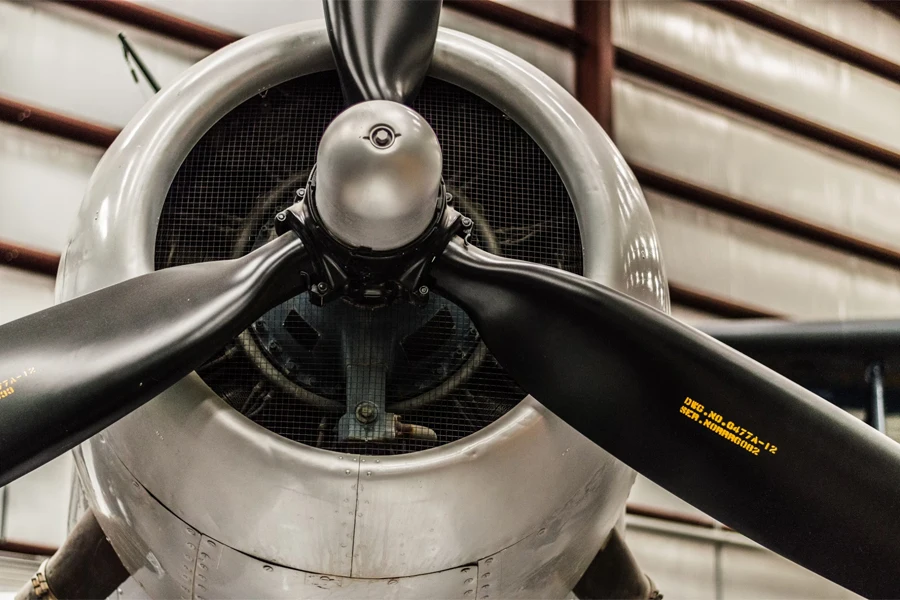Table of Contents
1. Introduction
2. Propeller shaft types and their best uses
3. 2024 market trends and insights
4. Key considerations for selecting propeller shafts
5. Top-rated models and their standout features
6. Conclusion
Introduction
Propeller shafts used in different economic sectors help transmit mechanical power within the range of an engine and a propeller to facilitate efficient performance. These shafts are widely used in automotive, marine, and aerospace industries to support the functionality and durability of automobiles and vessels. Modern propeller shafts are made of stainless steel, bronze, and brass and are manufactured to be as efficient as possible and compliant with the existing rules and regulations. By choosing the right propeller shaft, there are possibilities to increase the fuel consumption rates, minimize the emission rates, and improve the main parameters that describe the equipment’s operational performance.
Propeller shaft types and their best uses

2.1 Single piece shafts
The basic propeller shaft type is the single piece shafts that are slightly thickened in the centre and run as a link between the transmission on one side and the differential or propeller on the other. These shafts are characterized by their simplicity, enhancing dependability and simple maintenance processes. Single-piece shafts are particularly appropriate when the distance between the transmission and the differential is short and cannot be called for by an extra support shaft. They are mostly fitted in light-duty vehicles and boats, which require the rugged and reliable performance of the engines. There are no joints in a single-piece shaft; this reduces the possibility of having areas that can easily break; they are useful in places with constant and steady usage.
2.2 Multi-piece shafts
Multi-piece shafts comprise two or more pieces of shafts that are coupled using flexible couplings or universal joints. These shafts are long enough to have a larger distance separating the transmission and the differential, thus used for large cars and ships. The design of multi-piece shafts also has a segmented structure, which means that it can be adjusted to meet the geometry of the installation space and the distance between the pieces. This is especially helpful in heavy goods vehicles, manufacturing equipment, and larger sea-going vessels with complicated drive system configuration. Furthermore, in multi-piece shafts, other than transmitting power, flexible utilizes are utilized to lessen vibrations and minimize stress-minimizer components of the drivetrain, thereby increasing its life span and performance.
2.3 Material varieties
Propeller shafts are normally made from stainless steel, bronze, and brass, and they all have special features adaptable to the specific property. Steel is quite preferred for shafts because of its strength, resistance to corrosion, and durability. This characteristic makes stainless steel very suitable for use in marine applications because of issues related to water and other environmental factors. The other unique property of the material is that it is very strong tensile, meaning that it does not easily deform under conditions of strong torque or when in rotary motion.
Bronze shafts having great corrosion resistance and better non-stick properties are commonly used in the marine industry. The fact that the material does not encourage the formation of marine growths and its ability to endure long-term exposure to salt water makes bronze ideal for use as boat propeller shafts. Besides that, bronze has good machinability, making it easy to fashion and create products with accurate design specifications.
Like bronze, brass has good strength, flexibility, and corrosion resistance but is not as strong as the former. In several instances, these factors are desired for application in a given material or process. The type, also commonly known as brass propeller shafts, is used widely in both automobile and marine industries due to its features, such as cost-efficiency.
2024 market trends and insights

3.1 Global market surge
Analysts estimate the propeller shafts market to be US$ 7.7 billion in 2023, which is expected to grow to US$ 10.6 billion by 2030. They expect that this improvement will occur at a CAGR of 4.7% between 2023 and 2030.
3.2 Cutting-edge innovations
Technology continues to grow fast in the propeller shaft market, mainly due to the continuous development and improvement in the propeller shaft outlook for better performance, durability and efficiency. Technological advances in materials, such as high-strength stainless steel, bronze, and brass, are enhancing the quality and durability of propeller shafts. Some are highly corrosion-resistant and wear-resistant, making them suitable for high-stress conditions.
Operations, too, have improved in manufacturing engineering and sophisticated manufacturing methods. This makes the use of automation, as well as robotics, in the production line to guarantee quality production and cut manufacturing costs. In addition, advancing lightweight materials and composite structures improves fuel efficiency.
The industry is also planning to adopt Additive manufacturing, also known as 3D printing; it requires complex propeller shaft elements that can be designed easily with enhanced feature accuracy that can be incorporated using the 3D printing technique. It aids in quick prototyping and helps manufacturers sync with the market needs and diversification.
Key considerations for selecting propeller shafts

4.1 Tailored performance
Choosing the correct propeller shaft depends on the specification’s suitability to the particular application of the vehicle or vessel. This, again, involves the torque requirements, rotation required, and the positioning of the component for efficient usage. For applications like high power rating cars, Lorries, boats, etc., propeller shafts that can work under high pressure and high rate revolving are needed. Thus, flexibility and lightweight materials may be the primary concerns of smaller automobiles and watercraft. The fact that the shaft is custom-made for the particular application assists in minimizing, hence increasing the efficiency and durability of the shaft.
4.2 Compliance and standards
The emission and efficiency standards certification is an important consideration when choosing propeller shafts. The regulatory authorities establish measures and policies to reduce environmental effects and increase fuel economy standards. By using new-generation metals such as stainless steel and composite, new-generation propeller shafts can assist in meeting such standards through weight and durability. Furthermore, manufacturers must respect that their products conform to particular certifications and testing relevant to the manufacturing line. Being up-to-date with existing laws and implementing compliant parts is useful in the legal and sustainability aspects of the entire operation.
4.3 Budget-friendly choices
Supplier selections must strike between paying high acquisition costs for propeller shafts and acquiring those with potentially low overall lifetime costs. This is why high-quality materials and sophisticated manufacturing procedures add up to the initial cost but are cheaper in the long run due to the low maintenance costs and longer lasting. Cost overheads in terms of installation costs, cost of maintenance, and possible loss of operating time need to be factored in. If the user can select a low-cost product of good quality, money can be saved in the long run. Only by evaluating specific requirements and operating conditions will it be possible to select propeller shafts that will benefit the most.
4.4 Trusted manufacturers
Since the reliability of propeller shafts affects the overall performance and quality of vessels, manufacturers who specialize in their clients are the best. For this reason, users are advised to go to reputable manufacturers who can provide quality products, support, and after-sales services. Other indicators useful in assessing manufacturers include market coverage, customer feedback, and accreditations from recognized set modest reserves to enhance products and provide innovations to address innovative market needs. A relationship with a reliable manufacturer guarantees the availability of the newest technologies and assistance, consequently improving the functionality.
Top-rated models and their standout features

5.1 Industry leaders
Propeller shaft manufacturers are not restricted, and there is an active competition where some famous manufacturers are considered for their innovation, quality, and market penetration. GKN Driveline, NTN Corporation, and Dana Incorporated are some of the market’s key players contributing significantly to developing the propeller shaft. GKN Driveline has always been famed for its innovative solutions and the vast R&D sector in the industry. The company’s targeted sectors cover high-performance materials and manufacturing techniques to achieve reliability and productivity. Dana Incorporated makes a broad offering of propeller shafts focusing on strength and reliability to match individual applications. These industry leaders act as reference points for quality and performance within the marketplace and, with innovation, propel the market forward with their goods.
5.2 Best-selling models
Several models stand out for their exceptional features and performance among the top-selling propeller shafts.
1. GKN’s VL3 Propeller Shaft: This single-piece shaft is acknowledged for constructing the shaft in a way that has minimal joints and is sturdy for applications where high torque is required. The VL3 has a new type of spline connection that decreases the amount of rotational play and raises transmittable power to an additional level. It is employed commonly in sports cars and SUVs, as it is proven effective in endurance in hot, left-hand drive cars.
2. NTN’s U-Joint Propeller Shaft: NTN’s multi-piece shafts, like the U-Joint series, also include improved couplings for flexibility and minimum vibration. This model incorporates what is known as a high-precision u-joint, which means more power is conveyed effectively and that it is long-lasting. Preferred for commercial vehicles and trucks use, the material performs well under high loads.
3. Dana’s Spicer Life Series: Dana’s custom stainless steel propeller shafts from the Spicer Life Series allow for increased corrosion protection and product life. While these shafts are designed for marine use, they are built tough from a material selected for high strength in saltwater conditions. Spicer Life Series is widely used in the marine industry due to its reliability and minimal need for service.
4. Meritor’s MXL Driveline: Meritor’s MXL Driveline propeller shaft is one of today’s best propeller shafts due to its efficient design and durable material for constructing this powertrain connecting device. It has a modular design that makes it easy to service and to get off the air. The MXL series is more popular in the heavy-duty commercial vehicle market, where higher reliability and lower LCC are achieved.
5. Neapco’s Performance Propeller Shaft: Specification performance series of propeller shafts by Neapco are intended for high rpm uses, including racing and high-performance cars. These shafts are made from a lightweight composite that gives good strength and allows for a reduction in shaft weight. The sophisticated design reduces the distribution of mass or rotational inertia, resulting in maneuverability and superior vehicle performance.
5.3 Expert picks
Industry specialists often recommend specific propeller shafts based on their application expertise and performance assessments.
1. Heavy-Duty Trucks: For heavy-duty trucks and industrial machinery, GKN’s heavy-duty series is often suggested because of its capability to transmit high torque and reliability. The heavy-duty series features deeper pressure spline engagement and stronger joints for maximum functionality in demanding conditions.
2. Marine Applications: Dana offers marine-grade stainless steel shafting in the marine industry due to its excellence in resisting saltwater corrosion, which is more prone to lasting longer and performing efficiently. Drawing from the features of the Spicer Life Series, it has a long life and virtually requires no expansion on marine environments due to its sealing technology.
3. Passenger Vehicles: NTN lightweight and high-efficiency propeller shafts are widely accepted in passenger vehicles for better performance and fuel efficiency. The U Joints series by NTN means smooth power transfer and a lower NVH (Noise Vibration and Harshness), thereby improving the drive sensation.
4. High-Performance Vehicles: Neapco recommends the performance series for racing and high-performance vehicles because of this valve’s strength and lightweight. These shafts are made of special composites that are lightweight but, at the same time, provide relevant torsional strength, especially in motorsport.
5. Commercial Vehicles: Depending on the series of commercial vehicles, Meritor’s MXL Driveline is preferred by most customers because of its optional modular installation design and high strength. The MXL series provides simple maintenance and long service intervals, making it appropriate for fleet operation.

Conclusion
While choosing propeller shafts for 2024, some factors need to be considered, such as performance standards, guidance from the regulatory bodies, price, and reliability of the manufacturers. Some of the excellent marquees of the industry, such as GKN Driveline, NTN Corporation, and Dana Incorporated, produce such products. Chic models that have struck a high degree of popularity are GKN’s VL3, NTN’s U-Joint, Dana’s Spicer Life Series, and the like, known for their special features and guaranteed lasting capability. Such recommendations from experts also map to the importance of selecting the most suitable type of shaft for a given application to achieve the best efficiency and durability. By concentrating on these aspects, professionals can come to the right choice to optimize the organization.




